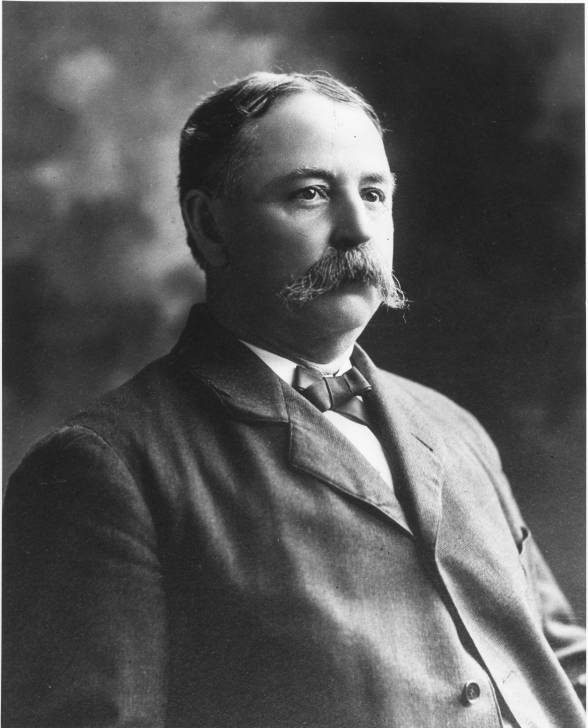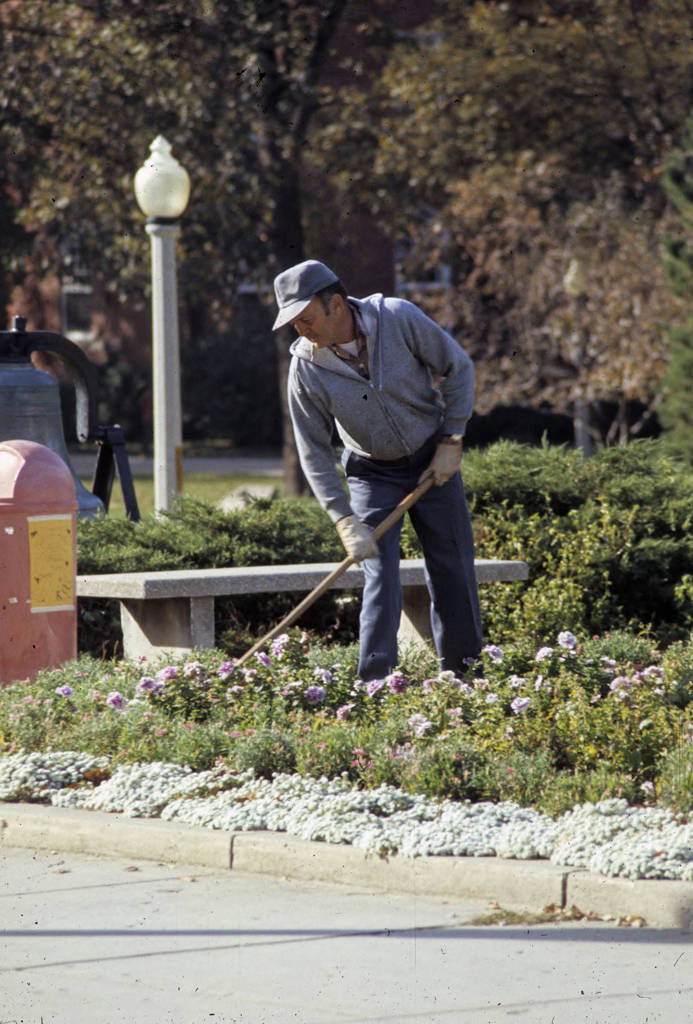From the connection between one of Illinois State’s greatest pitchers and one of baseball’s best hitters to the roots of Arbor Day, historian Tom Emery explores this month in Illinois State University history.
April 8
On this date 50 years ago today, Atlanta Braves slugger Hank Aaron belted his 715th career home run, breaking Babe Ruth’s record. Aaron’s teammate, Illinois State alum Buzz Capra, was a pitcher of record in the game.
A righthander, Capra tossed three scoreless innings to earn the save in the game as the Braves beat the Los Angeles Dodgers 7-4.
Aaron’s home run chase had captured the nation in late 1973 and early 1974. He hit number 713 in the second-to-last game of the 1973 season and had to wait for another chance at the record.
That same season of 1973 was the third in the majors for Capra, who played on the 1969 Illinois State team that captured the NCAA Division II national championship under longtime head coach Duffy Bass. A high school star at Lane Tech in Chicago, he made his big league debut with three appearances for the Mets in 1971.
He split the 1972 and 1973 seasons between the majors and the Mets’ Class AAA farm team at Tidewater. Capra pitched in a combined 38 games over those two seasons, with a 5-9 record and four saves. New York won the National League pennant in 1973, but Capra did not see action in the postseason.
Capra was sent to the Braves during spring training in 1974 and was expected to pitch in relief that year. In the season opener at Cincinnati on April 4, Capra came out of the bullpen and took the loss as the Braves fell 7-6 in eleven innings. Earlier in that game, Aaron tied Ruth’s record with his 714th home run.
The suspense of the home run chase continued for two more games (Aaron was not in the lineup on April 6). On April 8, Atlanta hosted the Los Angeles Dodgers in the Braves’ home opener, and Aaron drew a walk in his first at-bat in the second inning.
With one on and no outs in the fourth, Aaron blasted a 1-0 pitch over the left field wall for the 715th home run of his career. Atlanta led 7-4 after six innings when Capra came on in relief. The ISU grad was at his sharpest, as he shut down the Dodgers for the rest of the night. Capra struck out five of the first six batters he faced, including three in the seventh. A two-out walk in the seventh was Capra’s only baserunner of the night.
He proceeded to send the Dodgers down 1-2-3 in both the eighth and ninth innings to earn the save in a 7-4 Atlanta win. Capra finished with six strikeouts in three innings of work.
It was the first of many highlights for Capra in the 1974 season, who moved to the Atlanta starting rotation in May. That spring, he set a franchise record by going 26 innings without allowing an earned run.
In June, Capra went 6-0 with a 1.05 ERA and three shutouts, earning National League Player of the Month honors. He was selected to the National League All-Star team in July. Capra finished the season with a 16-8 record while leading the majors with a 2.28 earned-run average.
Unfortunately, Capra’s career was derailed by injuries from there, and he appeared in just 17 games for the Braves over the 1975 and 1976 seasons. He pitched in 45 games, mostly in relief, for Atlanta in 1977, his last in the majors.
After Capra’s career ended, he came back to Illinois State as the Redbirds’ pitching coach before a lengthy run as a minor league coach and manager.
In 1986, Capra was inducted into the Illinois State Athletics Percy Hall of Fame as part of the Redbirds’ 1969 national title squad. He will also be forever intertwined with the night Hank Aaron hit number 715, which remains a seminal moment in American sports history.
April 12
On this date in 1957, Suzzanne Douglas, an Illinois State alum who enjoyed a distinguished acting career in television, was born.
Douglas’ most famous role was Jerri Peterson on The Parent ‘Hood, a sitcom that was a hit on The WB network for five seasons in the late 1990s. She also appeared in big-screen hits like How Stella Got Her Groove Back, Tap, and School of Rock.
Raised in Chicago, Douglas showed great aptitude in the arts and later listed the 1965 movie musical hit, The Sound of Music, as an inspiration. After graduating from Thornton Township High School, Douglas enrolled at ISU and later earned a bachelor’s degree. She went on to earn a master’s in music, with a specialization in jazz vocals, from the prestigious Manhattan School of Music.
Her television debut was a minor role in the screen adaptation of the musical hit Purlie in 1981. She also appeared in three episodes of the long-running CBS daytime drama Guiding Light in 1986.
During the 1980s, Douglas found success on stage, starring in the 1989 Broadway hit revival of The Threepenny Opera and in the 1983 production of The Tap Dance Kid. Douglas was an understudy in the 1987 Stephen Sondheim smash Into the Woods.
However, Douglas’ breakout appearance was a supporting role in the critically acclaimed 1989 big-screen drama Tap, with a cast including superstars Gregory Hines and Sammy Davis, Jr. Douglas played the on-screen daughter of Davis, who was in his last feature film appearance before his death the following year.
For Tap, Douglas was honored with an NAACP Image Award for Outstanding Supporting Actress in a Motion Picture. It was the first of two times she won that award. Other notable awards for Douglas through her career included a Black Oscar, a Reel Award, and the Mary Martin Award.
In 1990-91, Douglas co-starred alongside Michael O’Keefe in all 17 episodes of the Fox comedy-drama Against the Law. Other television roles for Douglas in the 1990s included Promised Land (four episodes), I’ll Fly Away (three episodes), Touched by an Angel (twice), The Parkers (twice), The Cosby Show, NYPD Blue, and American Playhouse.
In 1998, Douglas played Angela in How Stella Got Her Groove Back, one of the hit movies of the season, that also starred Angela Bassett and Whoopi Goldberg. The film ranked second in domestic box office receipts in its opening weekend, and a soundtrack peaked at No. 8 on the Billboard 200 charts on its way to gold-record status.
Douglas’ biggest role, though, was The Parent ‘Hood, as she co-starred alongside Robert Townsend, one of the series co-creators, who had also attended Illinois State. The program was part of a block of four sitcoms on Wednesday nights that helped launch The WB into network status.
Douglas continued her success into the 21st century, appearing in School of Rock in 2003 with Jack Black and Joan Cusack. In 2015, Douglas played Cissy Houston, the mother of the late Whitney Houston in the Lifetime television movie Whitney. On the small-screen in the 2000s, she also appeared in Law & Order (two episodes), The Good Wife, Bones, and Bull.
Douglas died on July 6, 2021, from pancreatic cancer at age 64. Today, the Suzzanne Douglas Scholarship, established by the actress herself, supports students majoring in theatre at Illinois State.
April 20
On this date in 1844, John Williston Cook, the fourth president of Illinois State and one of the most influential figures in its early history, was born.
Cook served as ISU president from 1890-99, and left Normal to become the founding president of Northern Illinois University which, like ISU, was founded as an institution for teacher training. He remained in DeKalb for 20 years and was praised as “the best normal school president in the United States.”
Born on April 20, 1844, in Oneida County, N.Y., Cook moved with his family to McLean County at age 7, settling between Hudson and Kappa, where his father was an Illinois Central Railroad local superintendent.
Cook later enrolled at ISU, earning a degree in 1865. He was part of the sixth graduating class in university history. Cook spent one year as principal of the Brimfield schools in 1865-66 before returning to Normal as principal of the model school.
Even as a young alumnus, Cook maintained close relations to his alma mater, both personally and professionally. On August 26, 1867, he married Lydia Spafford, the sister-in-law of founding university President Charles Hovey.
In 1868, Cook was elevated to the university faculty at ISU, teaching history and geography. After one year, he became a professor of reading and elocution, remaining until an appointment as professor and chair of mathematics and physics in 1876.
A prolific writer, Cook co-authored a comprehensive history of Illinois State for the school’s 25th anniversary in 1882. From 1884-88, he was the editor and publisher of the periodical Illinois School Journal.
During Cook’s tenure on the faculty, the theory of Herbartianism gained traction across the nation as a pedagogy based on repetition and morality (or, in four steps, clarity, association, system, and method). The theory was also widely popular in Germany, which is described by ISU historian John Freed as “the birthplace of the modern research university and of most academic disciplines.”
Illinois State was considered the center of American Herbartianism, which was the most popular pedagogy in the nation at the time.
It was another measure of the educational leadership that has defined ISU throughout its history. At least 21 ISU students, including the well-regarded Charles DeGarmo, pursued study in Germany for training in these new methods.
Cook was a passionate believer in Herbartianism, and employed that thinking in his own classrooms. He became even more influential in promoting those methods in 1890, when he was named the fourth president in university history. In that role, Cook both encouraged, and funded, students who wished to study abroad.
Cook also left an imprint on campus. Since its inception, the University had managed with a single building, “Old Main,” but that was about to change. Cook secured funding for a second academic building, North Hall, as well as a new, castle-like gymnasium, now known as Cook Hall.
By now, Cook was a star in the field, and was in demand as a speaker at conventions and other public gatherings. Some media outlets called him “the Crown Prince of Teacher Education.”
However, by the end of the 1890s, Cook’s time in Normal was nearing an end, due to changes at Illinois State and the decline of Herbartianism.
In 1899, Cook, as well as some of the most respected faculty at ISU, left to found a new institution, Northern Illinois Normal. Cook, who had demanded the right to hire his own faculty, assembled a curriculum, faculty members, a librarian, a student body, and student housing—all in just four months.
Cook remained at NIU as a revered figure for 20 years and was beloved by students, in the words of the university yearbook, for his “warmth and dedication.” He served as president of the National Education Association in 1904. Eleven years later, the first residence hall for women was named in Cook’s honor, using his middle name, Williston.
Though he had transformed NIU, he retained a strong loyalty to Illinois State, returning as a featured speaker at the 50th anniversary celebration of 1907. Five years later, he authored The Educational History of Illinois, which was heavy on ISU narrative.
Weeks after his retirement as NIU President, Cook was driving in his car on July 27, 1919, when he suffered a medical issue that may have been either sunstroke or physical exhaustion. He died at his home in Chicago on July 15, 1922.
Two days later, an editorial in the Bloomington Pantagraph waxed poetic on Cook, calling him “a great lover of trees. He himself planted a tree in the world, the tree of knowledge and of love.”
April 26
Today is Arbor Day in Illinois, a holiday that was created to plant, and celebrate, trees across the nation. Arbor Day is one of the earlier examples of a national movement to protect the environment.
Much of the physical history of Illinois State University has been defined by trees, particularly at the Fell Arboretum. For decades at ISU, Arbor Day was a special day on the calendar.
In many Midwestern states, Earth Day comes just before Arbor Day, which has roots dating to 1872 and was the brainchild of Julius Sterling Morton, a journalist and newspaper editor who served on the Nebraska board of agriculture.
On January 4, 1872, Morton suggested a holiday to plant trees the following April 10 that he called “Arbor Day.” Some one million trees were planted across Nebraska on that date. In 1885, Arbor Day became a legal holiday in Nebraska.
Morton, who died in 1902, later served as Secretary of Agriculture in the second administration of Grover Cleveland from 1893-97.
Illinois and many neighboring states celebrate Arbor Day on the last Friday in April, which this year is April 26. However, Arbor Day is observed on different dates in many other states, owing to differences in local climate.
The earliest known reference to Arbor Day at ISU dates to 1896, when The Vidette reported that “a successful Arbor Day program was given by the pupils of all grades at the Model School.” The big event of the day was the planting of an elm tree by the students. The tree was named after Jesse Fell, which was a highly appropriate—and historically reflective—choice.
Fell was the energetic Bloomington businessperson whose yeoman efforts ensured that Illinois State University would be located in Bloomington-Normal.
Today, his name graces the Fell Arboretum, reflecting his love of horticulture. From what university historians call “his vision of a world populated with trees,” Fell took an intense interest in the development of the Quad, which remains a breathtaking centerpiece of the school. As part of the design, Fell planted nearly 1,850 trees on the campus, most of them by himself.
Today, the 490-acre Arboretum is home to 154 species of trees, and is known worldwide for its aesthetic splendor and horticultural diversity.
During this era, the Lincoln Memorial Trees were also a cherished part of the physical campus. On May 3, 1865, the same day that the Lincoln funeral train rolled through Normal, the University decided to plant an evergreen in the fallen President’s honor. The story of this Lincoln Memorial Tree, and its successors, is part of the Lincoln legacy on the campus.
The story of the Lincoln Memorial Trees was painstakingly researched in 2017 by Dr. D. Leigh Henson, a 1964 Illinois State graduate who enjoyed a long teaching career, particularly at Missouri State University.
In 1897, the University’s Arbor Day commemoration was a sophisticated exercise that included trees planted by children in each department of the Model School. The new trees were named after influential graduates in the University’s history.
Nine years later, the celebration had grown into an exercise of no less than 33 different student presentations, including songs, the reading of a proclamation by the Illinois governor, and discussion of such topics as “The Heart of a Tree,” “How, When, and What to Plant,” “Selections from Whittier,” “Bird Life,” and “The Red Squirrel.”
The Vidette paid homage to Arbor Day in 1902 by noting its congruence to American values. “Of all the days we have set apart for special observance,” wrote the paper, “none more fully harmonizes with the spirit of American institutions than does Arbor Day…What could be more appropriate than that such a land should set aside a day whose celebrations looks to the beautifying of our homes and to the improvement of our material surroundings?”
Poor weather drove the 1918 Arbor Day celebration inside to the Auditorium, but that didn’t stop participants from their primary mission. The Vidette reported that, after the program, the group “marched to the campus” and “the Thomas Metcalf building, and there planted the tree.” Each teacher and one child from each of the eight primary grades, as well as university teachers, assisted in filling “a spadeful of earth” to anchor the new addition.
In 1972, The Vidette reported that the University’s Grounds Department had a goal of planting one hundred trees, to celebrate the centennial of Arbor Day. The television section of the paper also took the opportunity on April 7, 1978, to highlight the re-airing of “It’s Arbor Day, Charlie Brown,” a Peanuts animated special that had premiered in 1976.
The Bloomington-Normal community has shared in Illinois State’s commitment to tree development. In 1988, Bloomington was honored as a Tree City USA by the National Arbor Day Foundation.
In 2008, the Arbor Day Foundation designated Illinois State as a Tree Campus Higher Education Institution, a unique honor that recognized the importance, and care, of trees on campus and the conservation goals that help the ISU community respect, preserve, and learn from them.
Today, the number, and diversity, of trees remain a striking hallmark of the Illinois State campus that has enthralled generations of students since Jesse Fell’s visions of 160 years ago.
Tom Emery is a freelance writer and historical researcher who, in collaboration with Carl Kasten ’66, co-authored the 2020 book Abraham Lincoln and the Heritage of Illinois State University.





